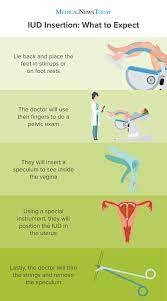
Paragard IUD removal is a short procedure that takes a few minutes at a professional healthcare office. Before removal, women take painkillers such as ibuprofen or acetaminophen to relieve pain that may arise. You can remove the device if you want to get pregnant. Paragard has copper molecules that block the fertilization process. If you have a sexually transmitted disease or you suspect that the IUD is broken.
It is not advisable to remove the device alone due to the associated complications. Before you remove the device, you should consult a doctor. You need to avoid any copulation for seven days for an appointment. The purpose of avoiding copulation is to prevent you from getting pregnant after the Paragard has been removed.
During the removal procedure, the patient should relax and lie on her back and place her feet on the footrests. The doctor uses a speculum to open the vagina. The area should be cleaned and sterilized well. Next, the doctor locates Paragard’s strings and pulls them slowly with forceps. As Paragard is torn, its arms should fold, and it should slide out of the uterus with ease.
Paragard removal side effects include dizziness. Some women have reported that they felt dizzy and nausea. A low pulse and severe abdominal pain or cramps are among other outcomes. Light and irregular periods affect the health of women. If the device breaks in the body, some women experience emotional trauma. They get angry and distressed that someone should have warned them about the consequences before they used the device. If the shards pierce the uterus, the person may experience sudden pain. To remove the shards, women need to undergo expensive medical procedures that affect their emotional and physical wellbeing. In some cases, they have to lose their uterus through hysterectomy.